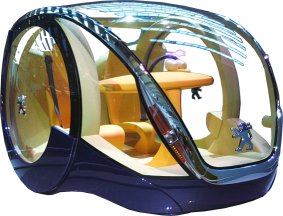
Bookstore
Exercises
Wheel change
Save Energy
History
Formulary

Ganz neu ...

Ganz neu ...
France 1
France 2
France 3
France 4
France 5
Peugeot
History
1891-1918
1918-1945
1945-today
2015 Vision GT
2015 208
2015 Bipper
2014 2008 Castagna
2014 108
2014 308 SW
2014 Boxer
2013 208 GTI
2013 308
2013 2008
2012 208
2012 508 RXH
2011 508
2011 3008 Hybrid 4
2009 RCZ
2007 207 CC
2006 207
2004 407
2004 107
1993 106
1992 905
1987 205 GTI
1986 205 Cabrio
1986 309
1983 205
1979 505
1975 104 Break Prototype
1975 604
1972 104
1969 304
1968 504
1965 204
1965 J7
1962 404 Coupe
1960 404
1955 403
1950 203 C
1948 203
1939 202
1935 402
1934 301 D Coupe
1934 401 Eclipse
1932 183 D Cabrio
1932 301 Torpedo
1931 201
1929 190 S
1929 201 301
1923 Type 172
1923 Type 174
1922 Type 153
1921 Type 156
1920 Quadrilette
1913 Type 146
1913 Bebe
1908 Lion VC
1906 Type 78 A
1905 Quadricycle
1903 Type 56
1891 Vis A Vis
|
 Peugeot (1945 - Modern) Peugeot (1945 - Modern)



The history of Peugeot from the time of the second world war up to turn of the millennium may be roughly divided into 4 segments:
- Boost of the production,
- Expansion of the production,
- Purchase restraint after crisis,
- Cars of the modern age.
Boost of the production
The machines were removed, the production plants strongly destroyed. Nevertheless, Peugeot developed - at least on paper - a new car during the last one and a half years of the war, the 203. This car aimed, surprisingly, not at the lowest car class, but slightly higher. This way, the new car was not a direct competitor to the Renault 4 CV and the Citroen 2 CV.
It is obvious that the Americans were a shining example in Europe at that time; the design carried unmistakable features of an already existing American car model. Peugeot was probably the fastest car company realizing a new development after the war. The principles of what was achieved as modern were realized with the self-supporting full steel body.
This was all the more surprising as it was still difficult to get steel. Therefore, the demand for vehicles was larger than the supply. The problems concerning the production capacity were enlarged even further, because the company decided to extend the production from one type to a complete model family. Peugeot featured traditionally a large amount of air throughput in the car. A sunroof and windows which could be opened almost without any draught and noise, proved this in later models. Also, station-wagon and vans belonged early on to the normal range of offers.
Expansion of the production
The boom lasted in the automobile industry up to the oil crisis in 1973/74. What does boom mean? From 1891 to 1952 Peugeot produced just around 1 million cars. The type 403 managed this number alone during its seven years of production. The mass motorization started. Of course, such volumes were only possible with new factories and extensions of the existing factories. The whole production was organized anew, with Sochaux still carrying the largest burden.
In 1963 the 404 was introduced. It remained in production for around12 years, and managed nearly 3 million vehicles. It marked the entrance to the upper middle class. Peugeot established a name by promoting a relatively conservative design, and a great deal of reliability. Also, its price tag was not extraordinary. Peugeot was even nicknamed to be the French Mercedes. After the successful engagement in the upper middle class, Peugeot engaged itself with the starting compact class. They brought in the 204. It was designed so well that although it was shorter from the outside, it offered a comparable space in the interior to the 404. The price was adequate to the new compact class. In spite that it was not equipped with a lot of features, it became a success.
France has, also measured in number of inhabitants, probably the largest expansion in Western Europe. In addition, the country was - in 1960 - still organized very industrially as, for instance, compared to its neighboring country, Germany. This also affected the highway planning, there were just around 200 kms of it. France simply developed the characteristically very straight Napoleonic national streets further. Partly they became three-laned. This explains the French emphasize for a strong body, while German cars, e.g., rather pointed out the more powerful engine. Still today, France has a lot of toll stations, because the highway originated from private investments.
Purchase restraint after crisis
The French and especially Peugeot felt the oil crisis less harsh than other companies. Nevertheless, the rosy situation was over as the market entered into a phase of saturation. As there was less profit to be divided, negotiations with the unions began for lower salary increases, and eventually decreases in the workforce. The government forbid Peugeot the dismissal of employees.
The VW factory, e.g., managed this phases already, up to the menacing bankruptcy, and held a strong position with the Golf, an immense competition pressure for Peugeot. Especially the sporty versions of the Golf were respected in France. But Peugeot tried - successfully - a different approach, the design. The 205 became, due to its round shape, the sweetie of Europe. Later one, very sporty variations boosted the market share even further. The main winners, however, were the small petrol engine and the relatively large-volume, gentle diesel.
Cars of the modern age
In France, the large Peugeot 604 manufactured from 1977, may have been a success, in the remainders of Europe it was not. In spite of the co-development of the 6-cylinder with Volvo and Renault, Peugeot did not manage to gain fame in the premium class. There are certain strengths associated with a brand, and these can be changed only with a lot of expenditure and a lot of time. This applies, e.g., traditionally to the complete French van program, which cannot assert itself in Central Europe.In other fields Peugeot is much more successful, in the meantime fused with Citroen to form the HPA group. As Honda and especially Toyota are leading in the area of Hybrid drives for the moment (2006), Peugeot again startled its competitors with a diesel feature, the particulate filter. Peugeot had the courage - as one of the first - to invent a system that avoids almost completely the particles in the waste gas, and implement it into mass production (!). In addition, it was introduced simultaneously in several cars. Thus, Peugeot strengthened its good name as a diesel engine manufacturer. Probably less known is Peugeot's capacity with the electric drive, which is offered, e.g., for two-wheelers, already for a long time.
Also in terms of design Peugeot stopped its conservative line. Indeed, Renault is a very strong competitor, claiming leadership in modern design, but the mass consumers in Europe feel themselves more at ease with Peugeot. Maybe less known is that the company won in 1991 and 92 the 24 hours of Le Mans.
.
|
|